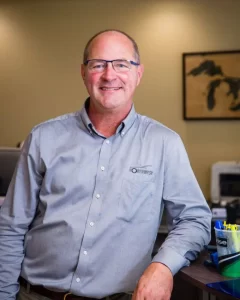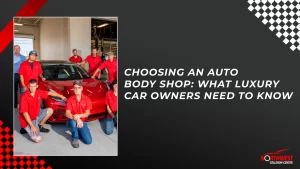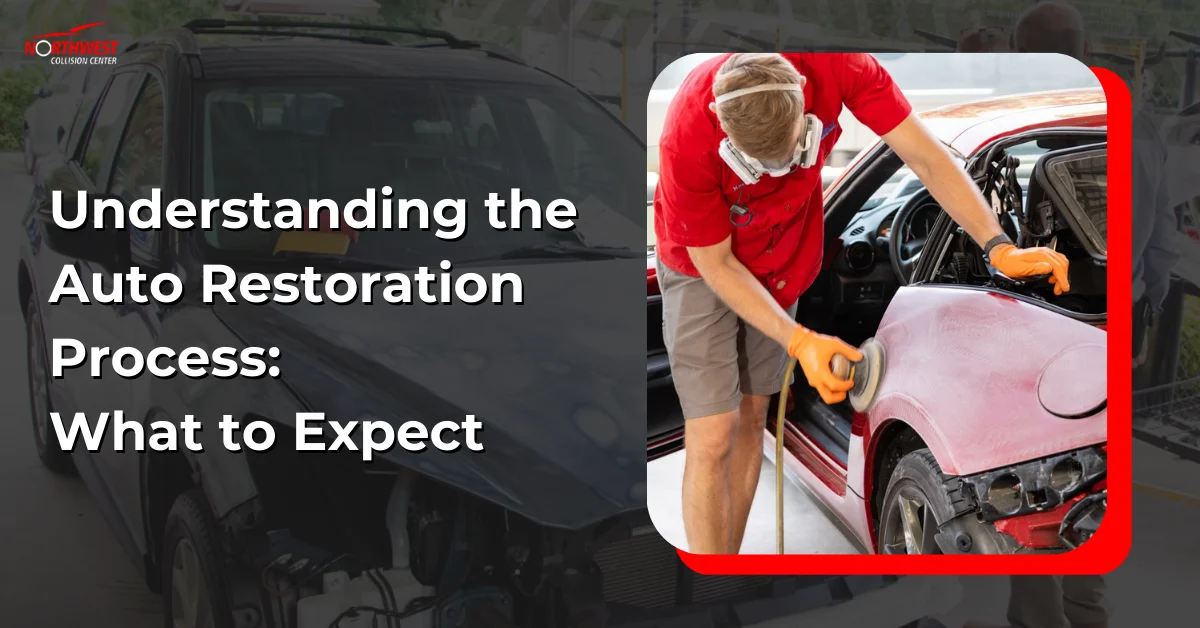You’ll find there are seven standout auto body repair methods that guarantee your car looks and functions like new. Paintless dent repair (PDR) works wonders without needing paint or fillers. Traditional body fillers are perfect for severe damage, creating a smooth surface for painting. Frame straightening uses advanced measuring systems and hydraulic equipment to restore structural integrity. Panel replacement involves precise alignment to fit perfectly. Glass repair, using specialized resin or complete replacement, maintains safety and aesthetics. Finally, paint matching and blending use computerized systems for an invisible finish. For a deeper understanding of each technique’s nuances and effectiveness, follow along.

Key Takeaways
- Paintless Dent Repair (PDR): Efficient and eco-friendly method for minor dents without sanding, fillers, or repainting.
- Traditional Body Filler: Essential for severe damage, involving sanding, filler application, and surface preparation before painting.
- Frame Straightening: Uses advanced measuring systems and hydraulic equipment to realign vehicle frames to factory specifications.
- Panel Replacement: Involves precise alignment and assessment of damage to decide between repair or full replacement.
- Paint Matching and Blending: Ensures seamless color match using computerized systems, applying multiple thin coats and clear coat for a professional finish.
Dent Removal Techniques
When it comes to dent removal techniques, you’ll often rely on methods like Paintless Dent Repair (PDR) and traditional body filler to restore the vehicle’s original shape. In an autobody repair shop, professionals assess the extent of the damage to determine the most effective approach. For minor dents where the paint remains intact, methods such as PDR are preferred, but for more severe damage, traditional body filler techniques are vital.
In a car body shop, technicians use specialized tools to manipulate the metal back to its original form. Traditional body filler involves sanding down the damaged area, applying a body filler compound, and then sanding it again to achieve a smooth surface. This process is meticulous, requiring precision to guarantee that the repaired area blends seamlessly with the rest of the vehicle.
Body shop car repair experts understand that using high-quality materials and proper techniques is important. They often use primers, sealants, and topcoats to improve durability and match the vehicle’s original finish. While these methods are effective, they require skill and expertise to execute correctly, assuring the longevity and aesthetic appeal of the repair.
Paintless Dent Repair
Although traditional repair methods have their place, Paintless Dent Repair (PDR) offers a highly efficient technique for restoring a vehicle’s body without the need for sanding, fillers, or repainting. This method relies on specialized tools that gently push and massage the dented metal back to its original shape, preserving the factory finish.
When you take your vehicle to an autobody repair shop for PDR, technicians first assess the damage to determine if it’s suitable for this technique. Minor dents, dings, and even some larger dents can often be addressed with PDR, provided the paint surface is intact.
At a car body shop, technicians use tools like metal rods and body picks to access the backside of the dent. They carefully work the dent out from the inside, guaranteeing the exterior paint remains unblemished. This technique demands skill and precision, as excessive force can cause further damage.
Body shop car repair services offering PDR can greatly reduce repair times and costs. Because there’s no need for repainting, you avoid the risk of color mismatches. Additionally, PDR is environmentally friendly since it eliminates the use of harmful chemicals and materials. By choosing PDR, you’re opting for a quick, cost-effective, and eco-friendly solution to minor body damage.
Frame Straightening
When you’re tackling frame straightening, you’ll rely on advanced measuring systems to assess structural damage accurately. Hydraulic straightening equipment then applies controlled force to realign the frame to its original specifications. Precision alignment techniques guarantee every component is positioned correctly, maintaining the vehicle’s integrity and safety.
Advanced Measuring Systems
Advanced measuring systems, integral to frame straightening, guarantee precise alignment and structural integrity of a vehicle’s chassis. When you visit an autobody repair shop, these systems play a fundamental role in making sure your car is restored to its original specifications. Utilizing laser technology, computerized measurements, and 3D imaging, an automobile body shop can detect even the slightest misalignments in the frame.
In a car body shop, technicians use these advanced systems to compare the damaged vehicle’s current state against the manufacturer’s specifications. The system provides real-time data, allowing technicians to make precise adjustments. This guarantees that the vehicle’s frame is aligned correctly, which is essential for both safety and performance.
You’ll find that these systems are indispensable for modern autobody repair. They not only improve the accuracy of repairs but also greatly reduce the time required to complete them. By employing such advanced technology, an automobile body shop can provide you with a high level of service, making sure your vehicle is safe to drive and aesthetically pleasing. Advanced measuring systems are, as a result, a fundamental element in achieving superior results in frame straightening.
Hydraulic Straightening Equipment
Hydraulic straightening equipment, vital for frame straightening, utilizes immense pressure to meticulously realign a vehicle’s frame back to its factory specifications. This high-precision method is indispensable in an autobody repair shop when dealing with considerable structural damage. The equipment employs powerful hydraulic rams and clamps to exert controlled force, guaranteeing the frame is straightened accurately without causing further stress or damage to the vehicle.
In your car body shop, it’s important to have technicians skilled in operating these hydraulic systems. They start by securely anchoring the vehicle to a frame rack. Hydraulic rams are then strategically placed at specific points on the frame where corrections are needed. By applying gradual, precise pressure, the equipment can push or pull the frame back into its original shape.
An automobile body shop that invests in high-quality hydraulic straightening equipment can greatly improve repair accuracy and efficiency. This technology not only enhances the structural integrity of the vehicle but also assures safety and drivability. With the frame returned to its factory specifications, the car can be aligned correctly, making it roadworthy once again. This meticulous process underscores the significance of advanced equipment in modern autobody repair techniques.
Precision Alignment Techniques
Precision alignment techniques play an essential role in frame straightening by guaranteeing every millimeter of the vehicle’s structure is meticulously realigned to its original specifications. When you take your vehicle to an autobody repair shop, technicians use advanced equipment like computerized laser measuring systems to assess and correct any misalignment. This guarantees that the car’s frame is restored to factory standards, which is critical for both safety and performance.
At a car body shop, precision alignment begins with a thorough diagnostic process. Specialized tools measure the current state of the vehicle’s frame and compare it to the manufacturer’s specifications. Technicians at the automobile body shop will then use hydraulic pulling systems to adjust the frame, making minute corrections to guarantee perfect alignment.
These techniques don’t just restore the frame; they also confirm that all related components like suspension and steering are correctly aligned. This attention to detail prevents future wear and tear and maintains the vehicle’s structural integrity. By opting for a professional car body shop that employs precision alignment techniques, you’re ensuring your vehicle is safe, reliable, and performs as intended.
Auto Body Fillers
When repairing dents or imperfections on a vehicle’s body, you’ll often rely on auto body fillers to achieve a smooth, flawless finish. At an autobody repair shop or car body shop, technicians use these fillers to address surface flaws before painting. The process starts by cleaning the damaged area thoroughly to remove any dirt or grease. Next, the technicians use sandpaper to roughen the surface, guaranteeing better adhesion for the filler.
Auto body fillers usually come in two parts: a resin and a hardener. Mixing these components activates a chemical reaction, turning the filler into a workable paste. It’s vital to mix them meticulously to avoid any inconsistencies that could affect the repair’s durability. Once mixed, the filler is applied to the damaged area using a spreader, gradually building up the layers until the surface is even with the surrounding metal.
After the filler sets, it’s sanded down to match the car’s contours. This step is essential for achieving a seamless integration with the rest of the body. Finally, a primer is applied to prepare the surface for painting, guaranteeing long-lasting adhesion and a professional finish. Body shop car repair experts excel in these techniques, delivering impeccable results.
Panel Replacement
When considering panel replacement, you need to first assess the extent of the damage to determine if a full panel replacement is necessary. Next, precise panel alignment techniques are essential to guarantee a seamless fit and proper vehicle function. Finally, don’t forget to factor in cost considerations, including labor and material expenses, to stay within budget.
Assessing Damage Extent
Evaluating the extent of damage for panel replacement requires a meticulous inspection to determine if the panel can be repaired or necessitates a complete replacement. When you take your vehicle to an autobody repair shop, the technicians will first conduct a thorough evaluation of the damage. This begins with a visual inspection to identify any surface imperfections, dents, or deformation.
In a car body shop, specialized tools such as paint depth gauges, alignment lasers, and frame measuring systems help in determining damage extent. Technicians will check for underlying issues that aren’t visible to the naked eye, such as compromised structural integrity or alignment problems. They’ll also consider the material of the panel—whether it’s steel, aluminum, or composite—since this influences repairability.
Next, they’ll gauge the extent of the damage by measuring the depth and spread of any dents or creases. Minor damages might be repairable using techniques like paintless dent removal or panel beating. However, if the damage is severe, such as extensive rust, large tears, or deep creases, complete panel replacement becomes necessary. By accurately determining damage extent, the technicians make sure that the chosen repair method restores your vehicle to ideal condition.
Panel Alignment Techniques
To guarantee precise panel alignment during replacement, technicians utilize advanced equipment such as laser measuring systems and computerized alignment tools. At an autobody repair shop, these tools guarantee that replacement panels fit seamlessly, restoring the vehicle to its original specifications. Laser measuring systems offer micrometer-level accuracy, allowing technicians to detect even the slightest misalignment. This precision is vital for maintaining structural integrity and ideal aerodynamics.
In a car body shop, computerized alignment tools take it a step further by providing real-time data and visual guides. These systems can compare the current state of the vehicle to factory specifications, making certain that every panel is positioned correctly. Technicians at an automobile body shop use these tools to adjust panels incrementally, assuring a perfect fit. This method minimizes gaps and guarantees that the panels align with adjacent parts, maintaining the vehicle’s aesthetic and functional integrity.
Additionally, specialized clamps and fixtures are often employed to hold panels in place during the alignment process. These tools help maintain stability, allowing for precise adjustments. By integrating these advanced techniques and tools, autobody repair shops provide high-quality, reliable repairs that meet or exceed industry standards.
Considerations
Understanding the cost considerations for panel replacement involves evaluating both direct expenses and potential hidden costs, making sure you get a detailed estimate for the repair. When you visit an autobody repair shop, the direct expenses typically include the cost of the new panel, labor charges, and any necessary materials such as paint and adhesives. It’s essential to ask your car body shop for a thorough breakdown of these costs to avoid surprises.
Beyond the direct expenses, there are several hidden costs you should be aware of. For instance, the complexity of removing the damaged panel and installing the new one can lead to additional labor charges. If any underlying damage is discovered during the process, such as bent frame components or rust, these will incur extra costs. Make sure your body shop car repair estimate accounts for potential complications to avoid unexpected expenses.
Additionally, consider the downtime of your vehicle. While your car is being repaired, you may need a rental car, which adds to the overall cost. A reputable autobody repair shop should provide a detailed cost estimate that factors in all these variables, guaranteeing there are no financial surprises down the road.
Glass Repair and Replacement
In the domain of auto body repair, glass repair and replacement frequently demand meticulous attention to detail to guarantee both safety and aesthetic integrity. When you visit an autobody repair shop, you’ll find that technicians are trained to handle a variety of glass issues, from minor chips to complete windshield replacements. A reputable car body shop will use advanced tools and materials to ensure that the glass is installed correctly, maintaining the structural integrity of your vehicle.
At a body shop car repair, the process begins with a thorough inspection to assess the damage. For minor chips and cracks, technicians often use specialized resin that is injected into the damaged area, which is then cured using UV light. This method restores the clarity and strength of the glass, preventing further spreading of the damage. For more severe damage, full glass replacement becomes necessary. Technicians will carefully remove the damaged glass, clean the mounting area, and install a new pane using high-quality adhesives designed to withstand various environmental conditions.
Ultimately, proper glass repair and replacement are vital for maintaining the safety features of your vehicle, such as airbags and roof integrity, making it important to choose a skilled and experienced auto body repair provider.
Paint Matching and Blending
Following glass repair and replacement, confirming a seamless paint match and blend is equally paramount in restoring your vehicle to its original condition. When you take your car to a reputable car body shop, the technicians employ advanced paint matching techniques to guarantee the new paint blends perfectly with the existing color. This process begins with a precise color code retrieval from the vehicle manufacturer, followed by meticulous color matching using computerized paint mixing systems.
Body shop car repair isn’t just about fixing dents and scratches; it’s about making those repairs invisible. Technicians often use a technique called blending, where they gradually fade the new paint into the old paint around the repair area. This assures there’s no noticeable shift between the new and existing paint.
To achieve this, the car body shop experts will meticulously sand the area around the repair, apply a primer, and then spray multiple thin coats of paint. After the paint has cured, a clear coat is added to protect the finish and improve the vehicle’s glossy appearance. By using these technical and precise methods, body shop car repair specialists can restore your car’s exterior to its showroom condition, making it look as though it never experienced any damage.
Conclusion
Imagine your car gleaming under the sun, every curve and edge perfectly restored. You’ve learned about paintless dent repair that keeps the original finish intact, and frame straightening that aligns everything precisely. Auto body fillers smooth out imperfections, while panel replacement guarantees structural integrity. Picture flawless glass repair, and paint matching that blends seamlessly. These techniques, detailed and precise, guarantee your vehicle looks and performs like new, turning heads as you drive away.










